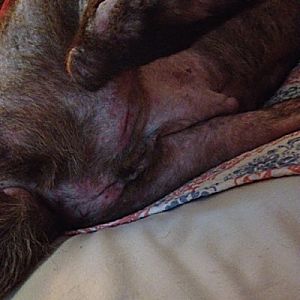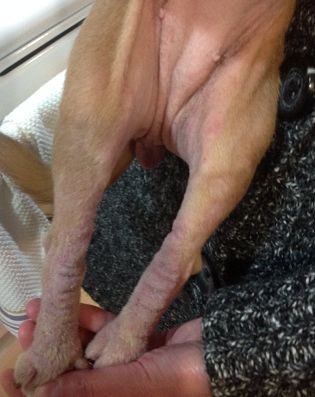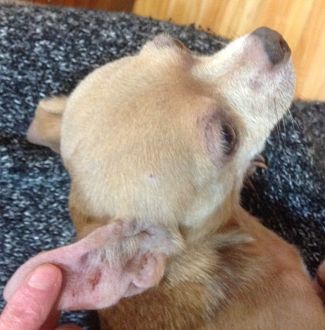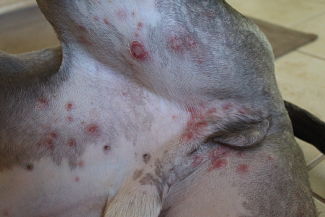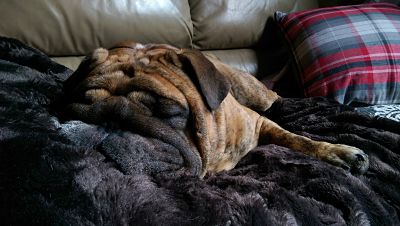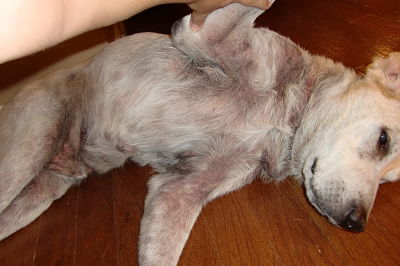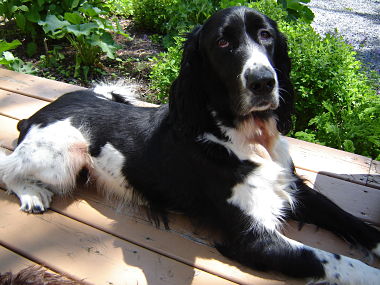Understanding
Canine Candida Albicans
Candida Albicans is
a common but little known root cause of many dog health problems. Candidiasis can contribute to and complicate many other canine health issues. It is important to realize that Candida is not a disease, though. Rather, it is a condition of internal microbial imbalance and can occur in people, as well as dogs.
 Dog with a yeast infection
Dog with a yeast infectionWhat Exactly is Candida?
- it is a type of yeast
- it is a glucose digesting fungus
- it exists as part of normal gut flora
- it can be opportunistic and invasive
- it can spread to other parts of the body
- it can exist in the mucus membranes of the gastro intestinal tract, urinary tract, mouth, nose, sinuses, ears, vagina and skin.
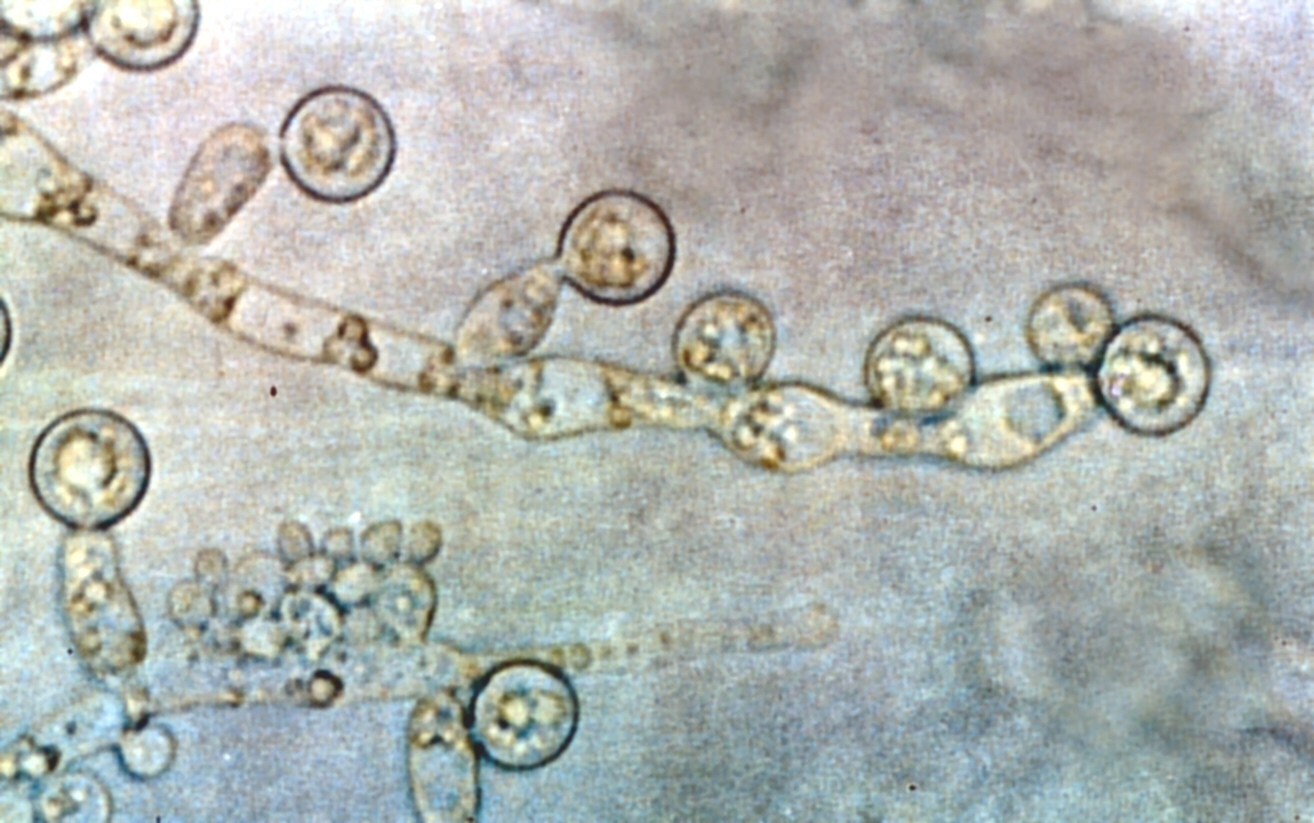 Spreading candida albicans fungus
Spreading candida albicans fungusCandida Albicans is better known as a yeast infection. It is a fungus that exists in the body in small colonies, under normal conditions. This yeast fungus is kept in balance by beneficial bacteria and other microbes in your dog's gut.
A yeast infection is a sure sign that your dog's Immune System is not working as well as it should. A candida yeast overgrowth is an indication that microbial balance needs to be restored in the gut. If the balance of bacteria and microbes in the small intestine is disrupted, this yeast fungus can multiply very rapidly, grow out of control and ultimately do damage to the mucosal lining of the intestines causing a condition known as Leaky Gut Syndrome.
Once out of control and damage has been done to the gut lining, the candida fungus can enter the blood stream and travel to other parts of the body. This causes chronic yeast infections that are very hard to get rid of because the fungus colonies are protected by biofilm which can elude the immune system, resist anti-fungal medications and natural yeast control options, making it resistant to treatment.
Candida Albicans Symptoms
Candida Albicans is polysymptomatic, showing itself in many different ways. Some yeast infection symptoms may seem quite odd. The vet may not have a reasonable explanation for why your dog is sick. Check this list of canine yeast infection symptoms.
- Black/brown/yellowish gooey build up of debris in the ears
- Shaking of the head
- Skin disorders
- Rashes
- Bladder and urinary tract infections
- Hot spots
- Excessive scratching
- Genital rashes and anal itching
- Excessive licking/chewing of the paws, legs, tail or other places on the body
- Allergies
- Lethargy
- Anxiety
- Hyperactivity
- Overly hungry and overweight
- Hungry and underweight
- Joint pain and stiffness ( Arthritis )
- Bowel disorders
- Thyroid imbalance
- Bloating, intestinal gas, cramps, inflammatory bowel disease
- Strong ' doggy ' odor
- ' corn chips ' smelly paws
- Dull, dry or greasy coat
Quite a list, eh?
These are some of the symptoms of yeast overgrowth that come to mind. If your dog has one or more of these symptoms, it's possible that he has candida albicans yeast overgrowth at the root of his health problems.
What Causes A Yeast Infection in Dogs?
So, how does this candida fungal infection problem get started?
- Antibiotics are broad spectrum. They destroy up to 90% of all bacteria. Antibiotics do not choose between good bacteria and bad bacteria. They just kill it all. Even if you or your pet has never actually taken antibiotics, we are all still at risk because of the meat we consume. Almost all chicken, 70 percent of cattle and 90 percent of pigs are raised on feed with antibiotics.
- Feeding dogs improperly for their species. Low quality commercial dog food, or even expensive premium
dog food containing grains, starches and too many unnecessary carbohydrates which convert to glucose in your dog's body.
- Drugs, prescription medications, vaccines and chemical pesticides. Chemical substances including vaccines, flea/tick/heartworm prevention pesticides, anti inflammatory medications and immune system suppressing drugs such as prednisone, create an imbalance of gut flora.
Here's a list of some other factors that can contribute to the canine candida albicans problem.
- molds in food
- mold in the environment
- acquired at birth from an infected mother
- chlorinated tap water
- stress
- seasons ( heat )
- environmental factors such as chemical lawn sprays and fertilizers
- household cleaners, detergents, fabric softeners
- diabetes
Chronic Yeast Infections Out of Control
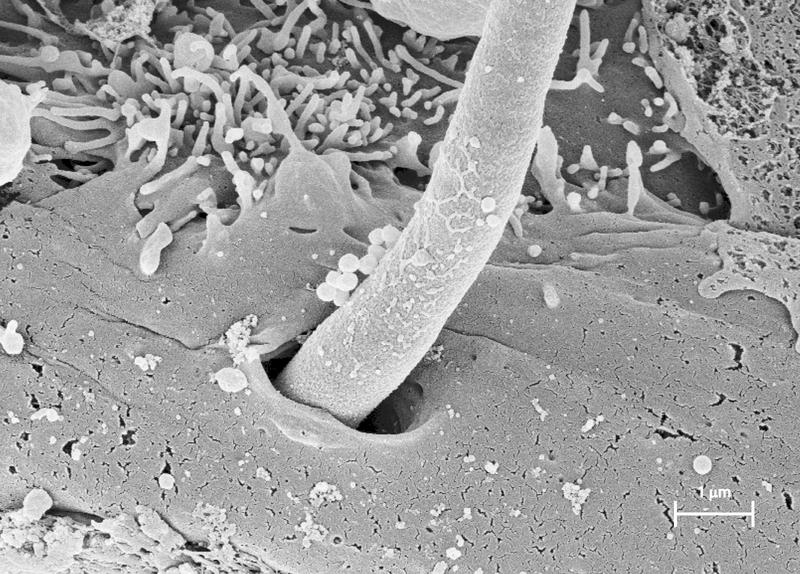 Candida albicans puts out root like tentacles that damage the intestinal wall
Candida albicans puts out root like tentacles that damage the intestinal wallSo, when the normal ratio of yeast fungus to friendly bacteria in the colon is disrupted, the yeast begins to grow out of control. The candida overgrowth spreads and gains access to the bloodstream and the lymphatic system.
The yeast fungus can change pathologically from a single celled organism to a branching fungal form, which can multiply rapidly. It uses root like tentacles to perforate the intestinal wall and damage cells there. This is called dysbiosis, better known as Leaky Gut Syndrome.
Once the yeast fungus enters the bloodstream and lymphatic system, it is free to travel to other parts of the body. Candida yeast fungus cells have a hard connective tissue shell, which protects it from the immune system.
Research has found 17 variations of yeast, including another yeast organism called Malassezia Pachydermatitis. It is found normally on a dog's skin and in the ears and is responsible for causing the thick, black hyper pigmented skin often seen in dogs with chronic yeast infections.
Good news!
Yeast Infection Treatment is Possible
It will take work and commitment on your part to help restore balance in your dog's body. Ridding him of this health robbing, fungal infection can be done, and the results will be worth it.
Often a candida yeast overgrowth condition is diagnosed as allergies. Usually, antibiotics, anti fungal medications,
anti-inflammatory drugs and steroids such as prednisone are prescribed to deal with the myriad of allergy symptoms. This will ultimately make the condition worse. If you don't believe me, you'll find out.
Medical yeast infection treatment drugs like this often do more harm than good. The underlying candida yeast overgrowth remains and the drugs continue to cause and perpetuate an imbalance of gut flora. Drugs may help to ease the symptoms temporarily, but as soon as you stop the drugs, the symptoms come back, and then...
Shit hits the fan!
Learn More About Candida Albicans Yeast Infection Treatment and Ask a Question Here.
Go from Candida Albicans Back to Home Page
New! Comments
Have your say about what you've just read here. Use the comments box below.
Sharing is appreciated!
